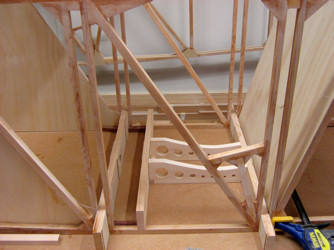

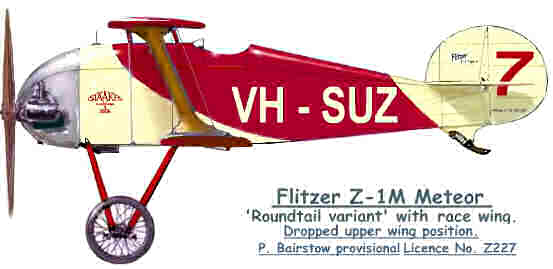
February 20, 2008 - Meteor Speedwing Started
Group,
Here's the first pictures of Peter Bairstow's Meteor Speedwing rudder laminations and his rudder jig. He's also jigged and made the laminations for the fin. The jigs are also ready for the Z-1R so maybe he'll be building the tailgroups simultaneously. It will be a very interesting exercise and it would be unique to see both together and hear Peter's comments on the differences in their construction.
Peter's full-on ambition is to have two slightly different Flitzer types at both ends of the 'difficulty spectrum'! The Meteor Speedwing is essentially a lightweight Z-21 with all the Stummel Type S 'visual' features of curves in the right places, raked tailplane and raked cabane combined with a reduced gap and a lighter, fabric-covered fuselage. It retains the two ailerons of the basic model and has no mass or aerodynamic balancing fitted. It is shorter-spanned than a Z-21 with a slimmed down outer wing bay beyond the interplane struts, like the Stummels, and promises to be one of the quickest of the breed, although this depends very much on the choice of motor and propeller.
The Stummelflitzer Z-1R is the most radical departure from the marque, a very compact machine optimised for roll-rate, climb and pitch manoeuvrability with a fine-tuning capability for balancing of the controls. It carries additional fuel in pannier tanks and will be equipped with the Rotec R2800 radial motor.
As a pair they combine the salient characteristics of the later Flitzers but in detail they'll differ markedly.
Lynn
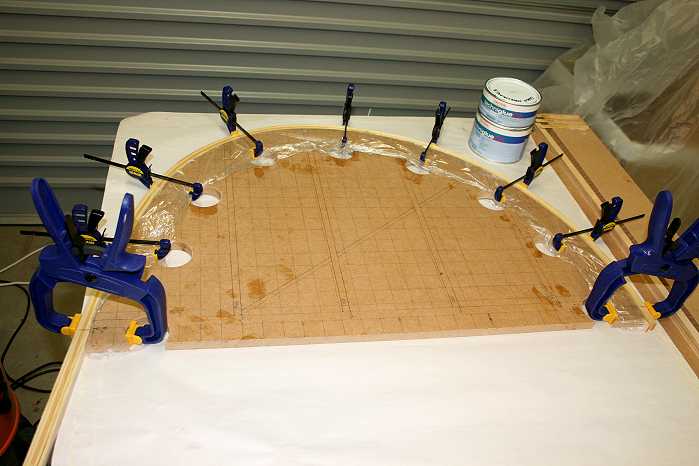 |
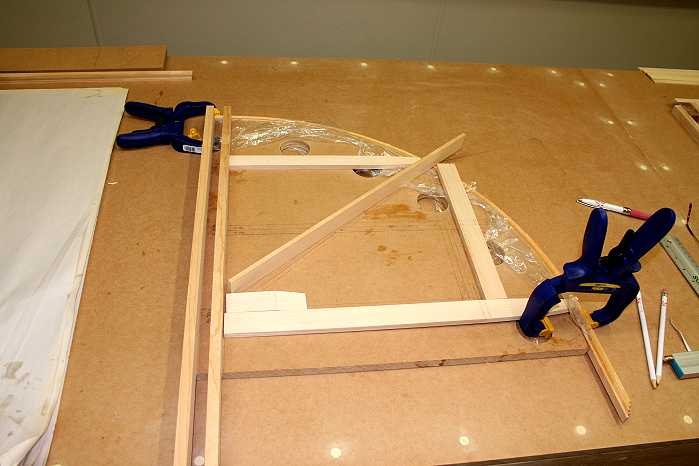 |
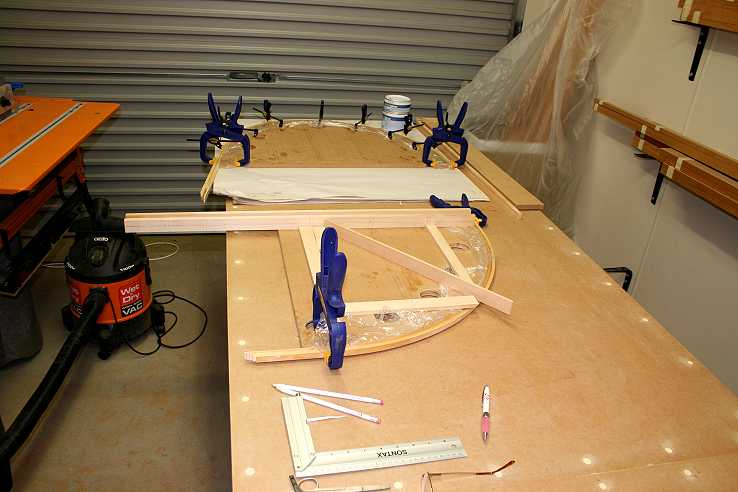 |
| Rudder Laminations | Here's the fin - basic elements. | Another fin jig picture from Peter. |
May 8, 2008 - Meteor Speedwing Started
Group,
Here's Peter Bairstow's Z-1M Meteor Speedwing fin and rudder superimposed onto the vertical tail of his Z-1R Stummelflitzer for comparison.
The deeper sternpost of the Z-1R is apparent here though not the additional laths which increase the Z-1S sternpost width and have yet to be added, along with the gusseting and blocks. Peter said that it was possible to shape the airfoil section of the leading and trailing edges without the blocks in place (see later pictures) as the structure is inherently strong.
Lynn
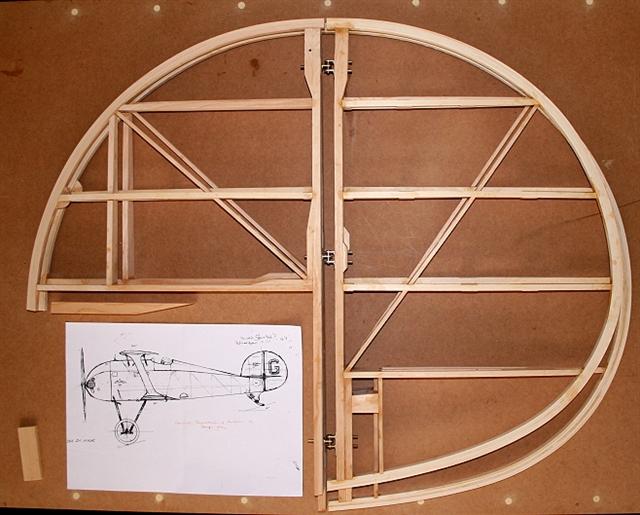 |
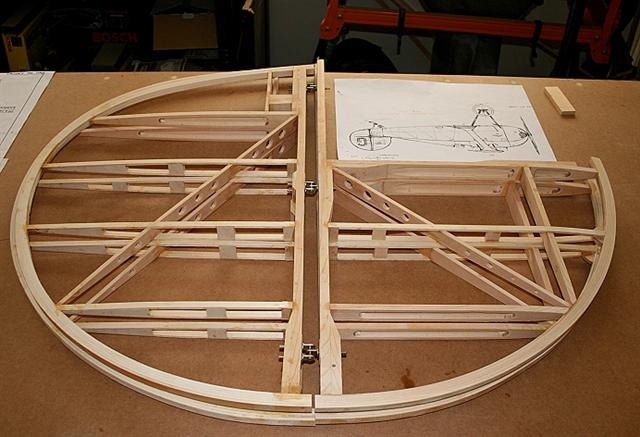 |
| Z-1M Meteor Speedwing fin & rudder superimposed onto Z-1R Stummelflitzer for comparison. | |
 |
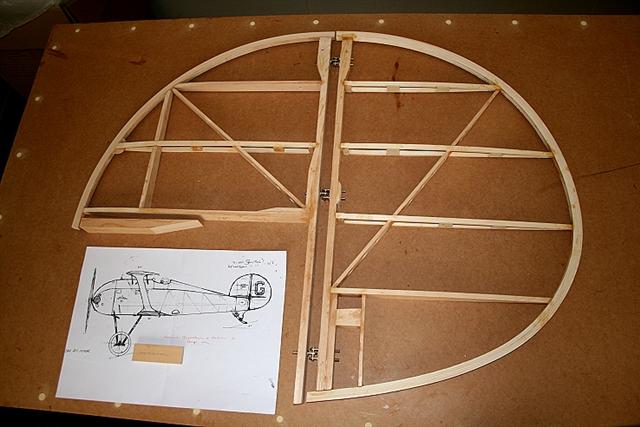 |
| Part sanded fin rudder - Meteor | Meteor Rudder |
January 18, 2009 - Australian Meteor Speedwing Progress
Group,
Herewith two pictures of Peter Bairstow's Z-1M progress in Australia.
Regarding the throttle support location, Peter, the throttle lever as drawn is quite long so it might suit your leg position as it is on the plans.
This is exciting!
Cheers,
Lynn
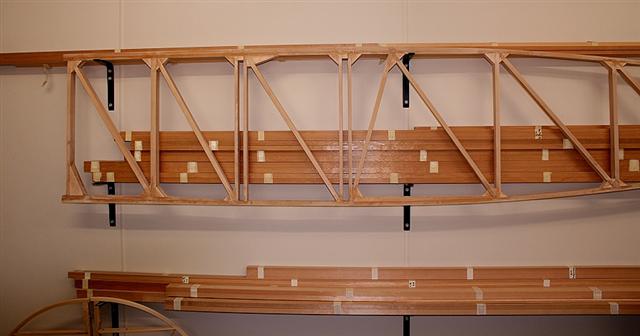 |
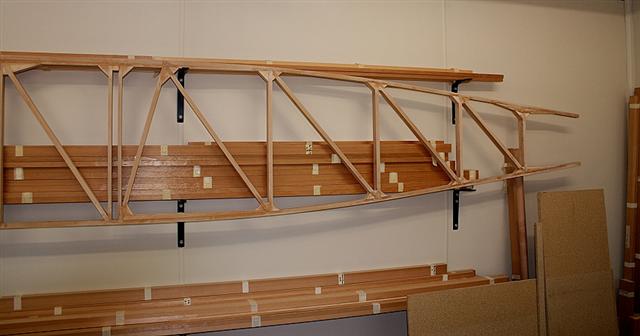 |
Hi Peter,
Excellent progress, if a little overdue from the enthusisatic designer's point of view. :0)
Re your questions: the harness attachment block behind the seat position tends to look a little small due to the tapered longeron-doubler increasing the local longeron thickness, so some of the effect is 'optical'. However I feel it could be enlarged (just glue a parallel block on top of the hypoteneus) because you don't want to drill through the longeron and doubler itself when mounting the lower torso-attachment bracket, ie. you must have enough 'land' to accommodate the bracket.
The seat side-frames, parts of which support the torque tube bearing beam, are glued in with the fuselage sides flat on the bench, so the small vertical block which glues against the pair of verticals at STA-2 can be glued-in to complete this area. Whether the fuselage will fail to pull symmetrically into a true curve with the additional blocking in place for the step on the LHS I cannot say, but I believe it will or can be persuaded to. Don't forget that you don't have to achieve the 'final shape' immediately on commencement of the assembly. The sternpost ends are tied 'loosely' together (with string) above a centreline (plumbed to a 'laser' thread stapled to the bench from the centre of the firewall bulkhead to the sternpost) while progressively you glue in the firewall bulkhead, the various cross-members and the seat back area, using the two 'slotted' carry-thro beams to lock the fuselage square, diagonally tramelling for symmetry as you go. The rear fuselage can take care of itself until later.
As you will no doubt be using the standard ply-decking aft - since ply tends not to want to form a duo-curve - it is still important that the rear longerons flow in a straight taper in plan view to the stern. So once most of the forward fuselage cross-structure is glued firmly-in and has set, then the rear longerons can be persuaded to continue their very local curve behind the seat area, clamping the longerons to four 2" x 4" timbers, to maintain a straight planview-taper to the rear fuselage whilst glueing-in the remaining cross-members and diagonals.
I can't recall whether you intend to use the Stummelflitzer headrest arrangement on the Meteor. If so there are very slight differences across the fuselage at some points, so it's best measured on the job. It will certainly look better with the headrest built-in and is worth the extra work.
Very encouraging, Peter.
Best regards,
Lynn
January 19, 2010 - Peter Bairstow's Meteor tailplane
Group,
Here are two pictures of Peter Bairstow's Meteor Speedwing tailplane ready for final shaping.
Beautiful work, Peter!
Cheers,
Lynn
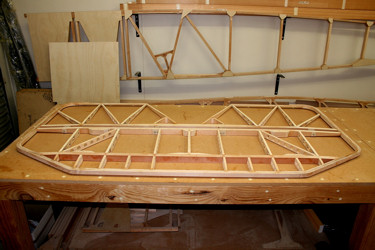 |
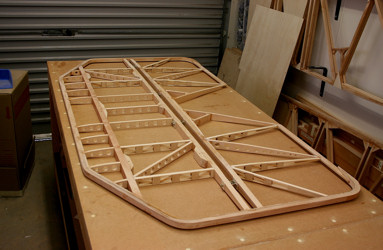 |
March 26, 2010 - Peter Bairstow's Meteor
Group,
Here's a picture of the dry-assembly of Peter's Z-1 Meteor Speedwing fuselage (note the fuselage frames of his Z-1R Stummelflitzer in the background).
Peter is a well-built chap yet he tells me he fits the standard 22" fuselage width comfortably and there's sufficient comfortable leg room to operate the pedals despite the shortened fuselage of the Z-1M (which is actually the same length as the Z-1S, though differing in that the longerons' vertical separation has a different dimension, ie. reverting to that of the Z-21). So there was no need to construct an 'A' (widebody) variant at 24" width. He mentions that if the controls (ie. throttle and mixture) were not carefully arranged there might be an issue with clutter in the 22" cockpit but with planning this need not arise.
He has lowered the seat some 2" by means of these bearers so that his head will not project too high into the slipstream, and the ply seat base with a small Dynafoam cushion should ensure that his eyeline is optimum for a good view in straight and level flight without having to fit a bigger windshield or raise the forward decking line, which we both felt would impact on the sleek lines of the Z-1M. The upper wing on the M is approximately the same height as on the Z-1S and R, ie. it has a reduced gap by comparison with the Z-21, and the Stummel-type raked cabane restores the tank bay length - given the more compact forward fuselage which would otherwise limit fuel volume.
Note the fuselage side step-brace. This can be built into any Flitzer type if necessary. Note that the M has 100% commonality of metal bracketry with the Z-21 so the Wasey Aeroplane Co. 4130 water-jet kit applies.
Peter's work exhibits the finest standards of workmanship for which the Flitzer biplanes are renowned.
Lynn
